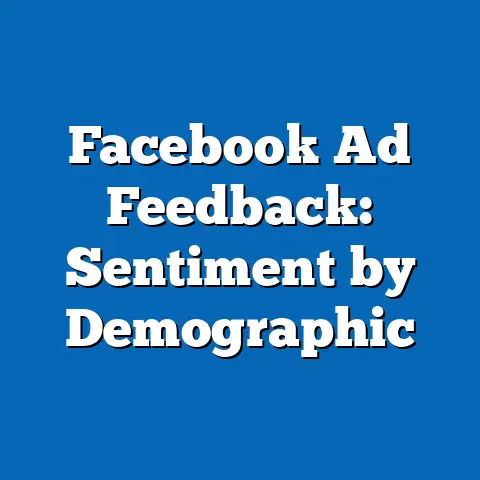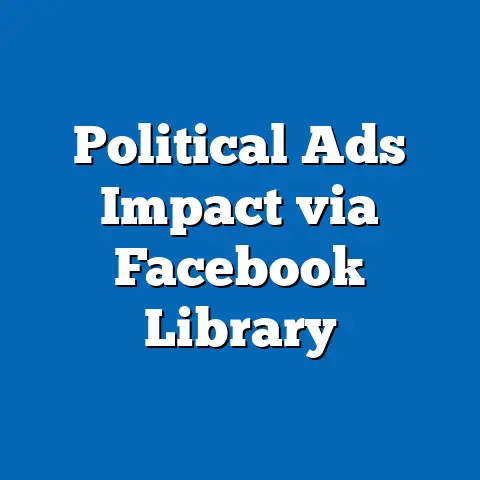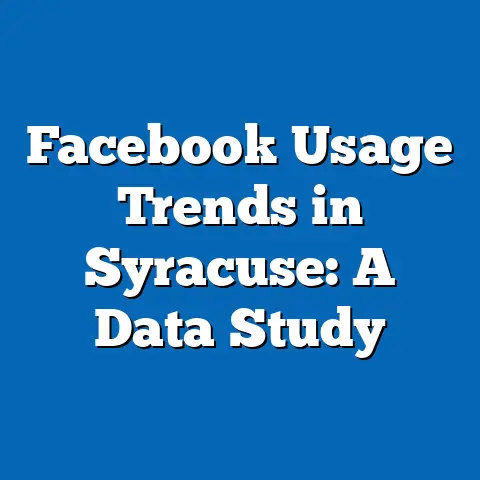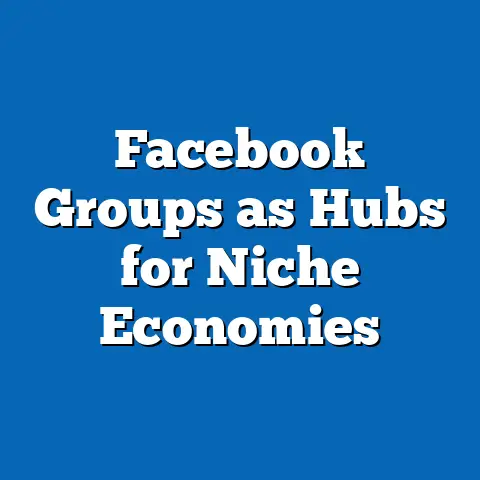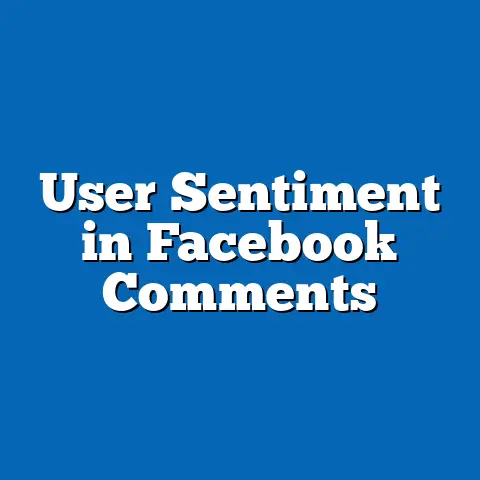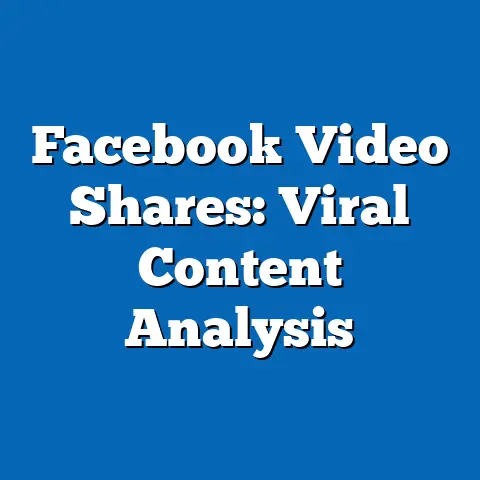Facebook Ad Spend Growth by Industry: 2020-2024
Did you know that global advertising spend on Facebook (now Meta) platforms skyrocketed by over 50% between 2020 and 2023, with projections for 2024 suggesting even steeper growth in specific industries? This staggering increase reflects a seismic shift in how businesses allocate marketing budgets, driven by the platform’s unparalleled reach and targeting capabilities. As the digital landscape continues to evolve, understanding Facebook ad spend growth by industry offers critical insights into economic priorities, consumer behavior, and technological adoption.
Defining Characteristics of Facebook Ad Spend Growth (2020-2024)
The growth of Facebook ad spend over the past four years is characterized by several distinct trends that reflect broader shifts in marketing and technology. First, there has been a marked increase in mobile advertising, as over 90% of Facebook’s ad revenue now comes from mobile placements, according to Meta’s 2023 financial reports. This aligns with global smartphone penetration rates, which surpassed 6.6 billion users by 2023, per Statista data.
Second, industries have increasingly adopted data-driven, hyper-targeted campaigns leveraging Facebook’s robust analytics tools. Advertisers can now segment audiences by demographics, interests, and behaviors with unprecedented precision, driving higher return on investment (ROI). This trend is particularly evident in industries like e-commerce and financial services, which have seen ad spend growth rates of over 60% since 2020, as reported by eMarketer.
Finally, the rise of video and interactive ad formats, such as Stories and Reels, has transformed engagement strategies. These formats, which often yield higher click-through rates (CTRs), have become a staple for industries like entertainment and retail. Together, these characteristics highlight a digital advertising ecosystem that prioritizes immediacy, personalization, and visual storytelling.
Historical Context: The Evolution of Digital Advertising
To fully understand the surge in Facebook ad spend, it’s essential to consider the historical context of digital advertising. Facebook launched its advertising platform in 2007, initially offering rudimentary banner ads and sponsored posts. By 2012, with the introduction of mobile ads and the acquisition of Instagram, the platform began to dominate the digital ad space, surpassing traditional media in revenue by 2017.
The period from 2020 to 2024 marks a particularly transformative era. The onset of the COVID-19 pandemic in 2020 forced businesses to pivot to online channels as physical stores shuttered and consumer behavior shifted to e-commerce. According to a 2021 report by the Interactive Advertising Bureau (IAB), digital ad spend grew by 12.2% in 2020 alone, with Facebook capturing a significant share due to its 2.8 billion monthly active users at the time.
Regulatory changes, such as the European Union’s General Data Protection Regulation (GDPR) and Apple’s App Tracking Transparency (ATT) framework introduced in 2021, also reshaped the landscape. These policies limited data collection, prompting advertisers to refine targeting strategies and invest more in first-party data solutions on platforms like Facebook. This historical backdrop underscores how external shocks and policy shifts have accelerated ad spend growth, setting the stage for industry-specific trends in 2024.
Industry-Specific Analysis of Facebook Ad Spend Growth
1. E-Commerce: The Digital Retail Revolution
The e-commerce sector has been the frontrunner in Facebook ad spend growth, with expenditures increasing by approximately 65% from 2020 to 2023, per eMarketer estimates. This surge is driven by the pandemic-induced boom in online shopping, with global e-commerce sales reaching $5.2 trillion in 2021, according to Statista. For 2024, projections suggest continued double-digit growth as retailers leverage Facebook’s Shop feature and dynamic product ads to drive conversions.
Key drivers include the platform’s ability to integrate with third-party e-commerce tools like Shopify and WooCommerce, enabling seamless customer journeys from ad to purchase. Additionally, younger generations, particularly Millennials and Gen Z, who prioritize convenience and social commerce, have fueled demand for targeted ads. However, rising ad costs due to increased competition may challenge smaller retailers in 2024.
2. Financial Services: Building Trust Through Digital Channels
Financial services, including banking, insurance, and fintech, have seen a 60% increase in Facebook ad spend since 2020, as reported by Socialbakers. This growth reflects a strategic shift toward digital customer acquisition amid declining foot traffic in physical branches. Fintech startups, in particular, have embraced Facebook ads to target tech-savvy demographics with offers for digital wallets, loans, and investment apps.
For 2024, the focus is likely to remain on building trust through educational content and testimonials, given consumer skepticism toward financial ads. Regulatory scrutiny around data privacy will also shape strategies, as firms navigate compliance while maximizing ad effectiveness. The societal implication here is a broader democratization of financial access, though concerns about misinformation in ads persist.
3. Entertainment and Media: Capitalizing on Visual Engagement
The entertainment and media industry, encompassing streaming services, gaming, and content creators, has experienced a 55% uptick in ad spend on Facebook since 2020, per AdAge data. The rise of short-form video content, driven by competition from TikTok, has pushed companies to invest heavily in Reels and Stories to capture audience attention. For instance, Netflix and Disney+ have used targeted campaigns to promote new releases, achieving high engagement rates.
Looking to 2024, the trend toward interactive and immersive ad experiences, such as augmented reality (AR) filters, is expected to grow. This industry’s reliance on younger demographics highlights generational differences in media consumption, with Gen Z favoring bite-sized, authentic content over traditional ads. The societal impact includes a blurring line between entertainment and advertising, raising questions about consumer manipulation.
4. Health and Wellness: Addressing a Post-Pandemic Audience
Health and wellness brands, including fitness apps, supplements, and telehealth services, have ramped up Facebook ad spend by nearly 50% from 2020 to 2023, according to Hootsuite analytics. The pandemic heightened consumer focus on personal health, driving demand for products and services advertised through relatable, community-driven campaigns. Facebook’s ability to target niche groups, such as fitness enthusiasts or mental health advocates, has been a key factor.
For 2024, expect a continued emphasis on authenticity, with brands using influencer partnerships to build credibility. However, misinformation in health ads remains a concern, prompting calls for stricter platform oversight. Societally, this trend reflects a growing prioritization of well-being, though access disparities may limit impact across demographics.
5. Travel and Hospitality: A Recovery-Driven Boom
Travel and hospitality saw a dramatic decline in ad spend in 2020 due to global lockdowns, but the sector has rebounded with a 70% increase from 2021 to 2023, per Skift Research. Airlines, hotels, and tourism boards have turned to Facebook to rebuild consumer confidence through visually appealing ads and targeted promotions. The platform’s geo-targeting capabilities have proven invaluable for reaching local and regional audiences as travel restrictions ease.
Projections for 2024 indicate sustained growth, particularly as pent-up demand for travel persists. However, economic uncertainties like inflation may temper consumer spending, affecting ad budgets. The societal implication is a renewed focus on experiential marketing, though environmental concerns about over-tourism could influence messaging.
Societal Implications of Facebook Ad Spend Growth
The exponential growth of Facebook ad spend across industries has far-reaching societal consequences that merit careful consideration. Economically, it signals a shift toward digital-first business models, with small and medium-sized enterprises (SMEs) gaining access to global markets through affordable, scalable advertising. However, this also exacerbates digital divides, as businesses without tech expertise or budgets struggle to compete.
Culturally, the proliferation of targeted ads shapes consumer behavior by reinforcing personalized content bubbles, potentially narrowing exposure to diverse perspectives. This phenomenon, often termed the “echo chamber effect,” has been widely discussed by scholars like Eli Pariser, who warn of its impact on critical thinking. Moreover, generational differences in ad reception—Gen Z’s preference for authenticity versus Baby Boomers’ trust in traditional branding—highlight evolving cultural norms.
In the workplace, the demand for digital marketing skills has surged, creating new job opportunities while rendering traditional advertising roles obsolete. A 2023 LinkedIn report noted a 30% increase in demand for social media marketing specialists since 2020. Yet, this shift also raises concerns about job security in legacy industries.
Finally, privacy remains a pressing societal concern. With Facebook’s ad model relying heavily on user data, incidents like the 2018 Cambridge Analytica scandal continue to fuel distrust. Regulatory frameworks in 2024 will likely intensify, impacting how industries balance personalization with ethical data use.
Technological and Economic Factors Driving Ad Spend Growth
Technologically, advancements in artificial intelligence (AI) and machine learning have revolutionized Facebook advertising. Algorithms now optimize ad delivery in real-time, ensuring higher CTRs and conversions, as evidenced by Meta’s reported 20% improvement in ad efficiency since 2020. The integration of AR and virtual reality (VR) also offers innovative ad formats, particularly for retail and entertainment.
Economically, the low cost-per-click (CPC) on Facebook compared to platforms like Google Ads—averaging $0.97 versus $2.69 in 2023, per WordStream—makes it an attractive option for budget-conscious industries. However, rising competition has driven up costs in high-demand sectors like e-commerce, with CPCs increasing by 15% annually. Inflation and economic uncertainty in 2024 could further strain budgets, prompting a shift toward cost-effective organic strategies.
Generational Nuances in Ad Spend Strategies
Generational diversity plays a significant role in shaping ad spend strategies, as different age cohorts respond uniquely to digital marketing. Gen Z (born 1997-2012), with its native digital fluency, prioritizes authenticity and social impact, often engaging with ads tied to influencers or causes. A 2023 Pew Research study found that 70% of Gen Z users trust peer recommendations over traditional ads, pushing industries like fashion and wellness to invest in user-generated content.
Millennials (born 1981-1996), balancing career and family priorities, value convenience and value-driven messaging, making them prime targets for e-commerce and financial services ads. Gen X (born 1965-1980) and Baby Boomers (born 1946-1964), while less digitally native, have increased their online presence post-pandemic, with Facebook remaining a key platform for reaching these cohorts. Travel and health industries often tailor campaigns to these groups, focusing on trust and nostalgia.
This diversity underscores the need for nuanced, multi-channel strategies rather than one-size-fits-all approaches. Industries in 2024 will likely allocate ad spend based on generational insights, balancing broad reach with targeted engagement.
Quantitative Insights and Expert Perspectives
Data from multiple sources paints a clear picture of Facebook ad spend growth. Meta’s 2023 Q3 earnings report revealed ad revenue of $33.6 billion, a 24% year-over-year increase, with projections for 2024 estimating a further 15-20% growth. Industry-specific breakdowns from eMarketer suggest e-commerce will account for 30% of total spend, followed by financial services at 15% and entertainment at 12%.
Experts like Dr. Karen Nelson-Field, a media effectiveness researcher, argue that while Facebook’s scale is unmatched, “advertisers must prioritize attention metrics over impressions to ensure sustainable ROI.” Similarly, marketing analyst Brian Wieser predicts that “2024 will see a pivot toward privacy-first advertising, as consumer backlash and regulations reshape targeting norms.” These perspectives highlight both the opportunities and challenges facing industries.
Forward-Looking Insights for 2024 and Beyond
As we look to 2024, several trends are poised to shape Facebook ad spend growth. First, the continued integration of AI will enhance ad personalization, though it may face pushback from privacy advocates. Industries like e-commerce and entertainment are likely to lead innovation in interactive formats, while sectors like travel may focus on rebuilding post-pandemic momentum.
Economic uncertainties, including potential recessions and inflation, could temper growth, particularly for discretionary industries. However, the low barrier to entry for Facebook ads ensures SMEs will continue to drive volume, even if per-ad spend declines. Regulatory developments, such as potential U.S. data privacy laws mirroring GDPR, will also influence strategies, pushing industries toward transparent data practices.
Societally, the balance between digital convenience and ethical advertising will remain a key tension. Will industries prioritize short-term gains over long-term trust? How will generational shifts, particularly Gen Z’s rise as a consumer powerhouse, redefine ad norms? These questions remain open, underscoring the dynamic nature of digital marketing.
Conclusion: Navigating a Digital-First Future
The growth of Facebook ad spend from 2020 to 2024 reflects a profound transformation in how industries connect with consumers, driven by technological innovation, economic shifts, and societal changes. From e-commerce’s dominance to travel’s recovery, each sector reveals unique priorities and challenges, shaped by historical events like the COVID-19 pandemic and evolving generational preferences. While data points to continued growth in 2024, nuances—such as rising ad costs, privacy concerns, and regulatory pressures—remind us that this landscape is far from static.
Looking ahead, businesses must adapt to a digital-first future with agility, balancing innovation with ethical considerations. As Meta continues to evolve its platform, and as new generations redefine engagement, the story of Facebook ad spend remains a critical lens for understanding broader economic and cultural trends. While uncertainties persist, one thing is clear: the digital advertising revolution is here to stay, reshaping society one targeted ad at a time.

